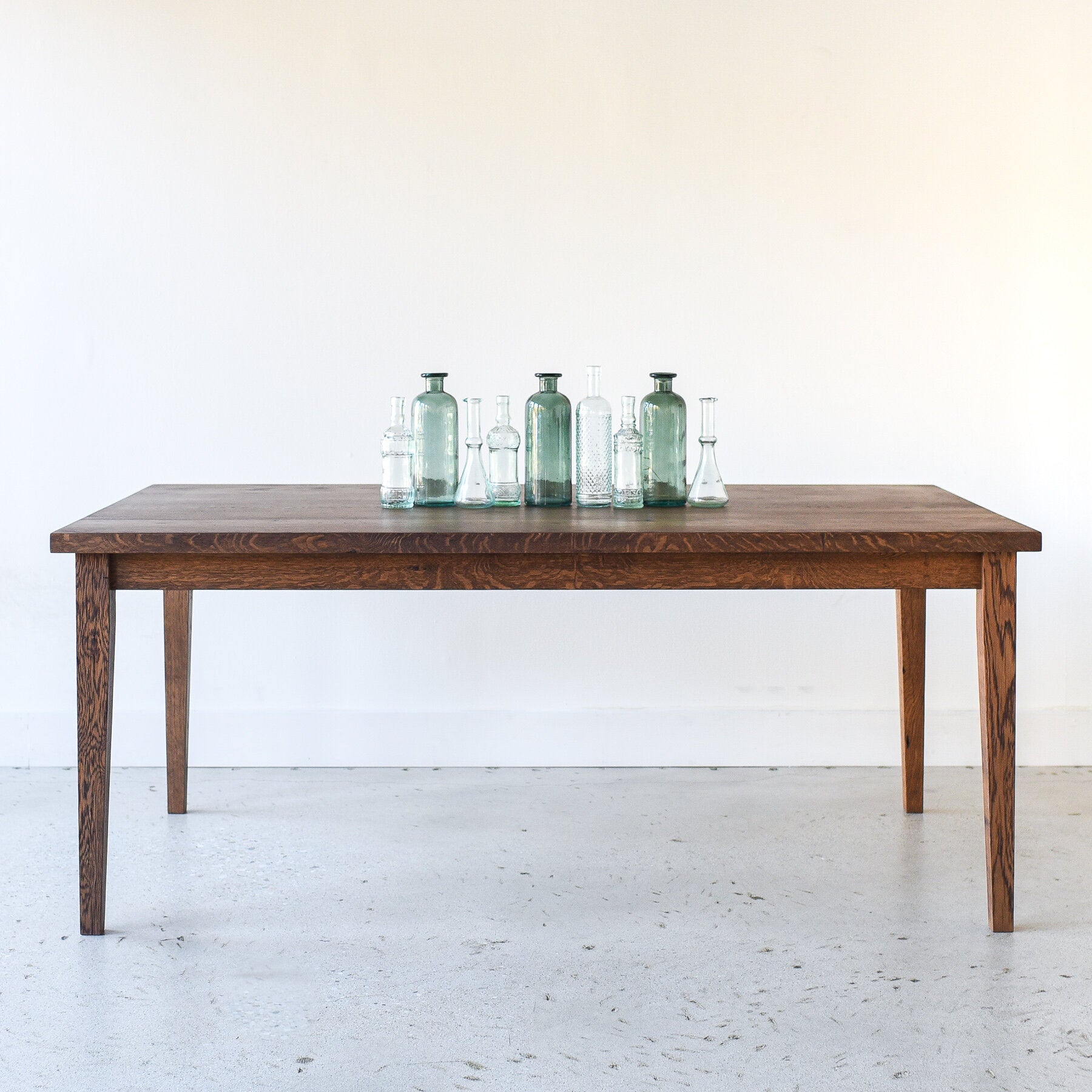Redefine Your Table's Allure with Gorgeous Dining Table Legs Wood Styles
Redefine Your Table's Allure with Gorgeous Dining Table Legs Wood Styles
Blog Article
Secret Factors to Maintain in Mind for Table Legs Wood Choices
When picking timber for dining table legs, numerous critical variables warrant careful consideration to make sure both capability and visual appeal. The choice of wood type, defined by its toughness and unique grain patterns, plays a critical role in the overall style and durability of the piece.
Wood Types and Qualities
When choosing wood for dining table legs, it is important to comprehend the distinct qualities of different wood types. Various timbers use distinctive benefits and downsides, affecting both the toughness and visual charm of the completed product.
Oak, recognized for its remarkable toughness, also includes a famous grain that can add personality to the table. Cherry timber, with its rich shade that strengthens over time, provides an extravagant look yet may call for more upkeep to prevent scratches.
On the various other hand, softwoods like yearn and fir are more inexpensive and less complicated to collaborate with, yet they are much less sturdy than hardwoods. Pine is light-weight and includes a warm, rustic appearance, making it a popular choice for laid-back eating setups. Nevertheless, it is a lot more susceptible to scrapes and dents.
Comprehending these features will certainly help in making an informed decision to make certain the legs of the table meet both visual and functional demands.
Grain Patterns and Appearance
The timber's grain is not simply a visual attribute; it conveys a special personality and charm to each item. Various timber types display unique grain patterns, ranging from the straight lines of maple to the intricate swirls of oak and the striking figure of walnut.
Moreover, the alignment and range of the grain can influence the perceived size and style of the table. As an example, bigger, much more pronounced grains might offer a strong, dramatic result, while finer, subtler grains can produce a refined, understated appearance. In addition, the completing procedure can additionally enhance these patterns, stressing the all-natural beauty of the timber and drawing out rich tones.
Eventually, the selection of grain pattern should balance with other style elements, such as the table top and surrounding furniture, ensuring a natural aesthetic that raises the dining experience. Thoughtful choice of wood grain not only contributes to the table's appeal but additionally reflects the proprietor's taste and style.
Longevity and Stamina
The resilience and strength of eating table legs are paramount factors to consider for ensuring long life and stability in any kind of eating room. Picking the appropriate timber is critical, as various types show varying levels of resilience.

Inevitably, purchasing high-quality timber and durable building techniques will yield a table that stands the examination of time, while giving a trusted structure for many meals shared among family members and friends. Focusing on longevity and toughness ensures that your dining table stays functional and visually pleasing for many years to come.
Upkeep and Treatment
Appropriate upkeep and treatment are crucial for protecting Your Domain Name the sturdiness and stamina of table legs made from wood. Regular cleansing is necessary; using a soft, wet fabric guarantees that dirt and particles do not build up, which can result in scrapes and dullness. It is a good idea to stay clear of rough chemicals or abrasive products that might damage the finish.
In addition, applying a suitable timber polish or wax occasionally can help maintain the shine and secure the timber from dampness and spills. Nevertheless, it is essential to adhere to the manufacturer's recommendations concerning the kind of product to make use of, as certain coatings may react negatively to certain chemicals.
Humidity and temperature fluctuations can also impact wood table legs, creating them to warp or split. It's ideal to put the table away from straight sunshine and heat sources. Addressing these immediately can protect against more damage. if the table legs have any kind of scrapes or dents.
Lastly, regularly evaluating the joints and screws for tightness is very important to maintain structural honesty (Dining Table Legs Wood). By sticking to these maintenance practices, house owners can ensure their wooden table legs stay functional and attractive for years to come
Environmental Factors To Consider
When linked here choosing wood for dining table legs, it's important to take ecological considerations right into account. The sourcing and sustainability of wood are critical in minimizing eco-friendly influence. Choosing wood from certified resources, such as those endorsed by the Forest Stewardship Council (FSC), makes certain that the hardwood is collected sensibly, promoting woodland preservation and biodiversity.

Additionally, local sourcing of wood reduces transportation emissions, supporting regional economic climates while minimizing environmental impact. It is also advisable to be familiar with the wood's therapy and ending up procedures, as particular chemicals can be harmful to both human wellness and the setting. By prioritizing lasting timber options, consumers can add to ecological preservation while enjoying the resilience and beauty of their table legs.
Verdict
In conclusion, selecting wood for eating table legs demands cautious factor to consider of various variables, including timber kinds, grain patterns, and sturdiness. Upkeep demands and ecological sustainability further influence timber selections, emphasizing the value of sourcing from certified or recovered products.
When picking wood for dining table legs, numerous critical aspects necessitate careful consideration to make sure both capability and visual appeal.Proper upkeep and treatment are vital for protecting the toughness and toughness of dining table legs made from wood.When selecting wood for dining table legs, it's necessary to take ecological factors to consider right into account. By focusing on sustainable wood choices, consumers can contribute to environmental preservation while taking pleasure in the toughness and elegance of their eating table legs.
In conclusion, selecting timber for eating table legs demands mindful consideration of numerous factors, consisting of timber kinds, grain patterns, and longevity. Dining Table Legs Wood.
Report this page